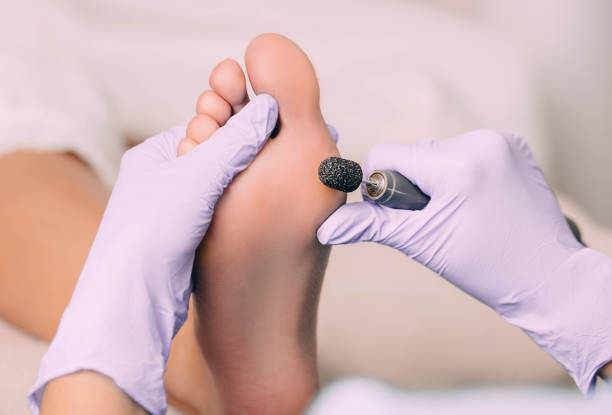Trauma can be caused by any situation that makes you feel overwhelmed and helpless. Whether it’s a one-time event, like a car accident or robbery, or ongoing stressors, such as living in a crime-ridden neighborhood or childhood neglect.
Recovery from trauma isn’t easy, but it is possible. It typically involves the support of loved ones and a therapist.

Identifying Symptoms
A traumatic event can be any experience that causes significant emotional stress, whether it was caused by a natural disaster, physical injury, abuse or bullying, an accident, or a serious illness. The effects can include feelings of helplessness, fear, nightmares, flashbacks and difficulty forming close relationships. Unresolved trauma can cause problems like panic attacks, depression or an inability to work or go about daily life.
Many people avoid people or things that remind them of the traumatic event. Others become withdrawn and emotionally distant. Occasionally, they may even develop complex post-traumatic stress disorder (C-PTSD) if the trauma continues over time. Symptoms of trauma can also include feeling overwhelmed by everyday stressors, not sleeping well and having a hard time thinking clearly.
It is important to remember that everyone experiences different symptoms and recovers at their own pace. Sometimes the recovery process can feel long, especially if you are constantly reliving the traumatic experience or avoiding things that make it worse. It is essential to stay connected with loved ones and seek out professional guidance if your feelings persist.
Try to participate in social activities that don’t revolve around the traumatic experience, but be comfortable if you aren’t able to talk about it. It’s also important to practice self-care and coping skills, including mindfulness and grounding techniques. The more you can make these a regular part of your routine, the less likely you will be to get stuck in the past or feel overwhelmed by the present.
Identifying Triggers
A trauma trigger can be a sight, sound, smell, thought, or feeling that reminds you of the traumatic event. It can even be a combination of these. Your therapist will help you identify the specific triggers that cause your symptoms.
Sometimes the triggers are obvious, such as when you see a news report about your assault or hear your abuser’s name. But other times the triggers are more subtle. For example, some survivors of sexual assault find themselves triggered when they see certain types of movies or pictures. You may not realize you are being triggered until your heart starts racing or you feel numb.
Trauma can rewire your brain, changing the way you think about yourself and others. As a result, your thoughts can be unhelpful and cause you to feel a variety of negative emotions like fear, anxiety, and self-blame. Clinical psychologist Ballarat can teach you how to understand your reactions and help you replace them with healthier thoughts that can calm your body and mind.
Healing from trauma can also be a long journey, with many detours and setbacks. But the important thing is to keep moving forward, reaching out for Modern Medicine support, and making healthy coping and self-care practices a regular part of your life. Focus on building strong connections with friends and family, reestablishing community involvement, and making your goals for the future a priority.
Developing a Plan of Action
As you work through trauma, you’ll learn coping skills and ways to ground yourself. You’ll be more aware of your own triggers and what it takes to stay safe, and you may find that symptoms like anxiety and depression begin to fade. You’ll also develop a sense of self-compassion and learn to treat yourself with kindness. And you’ll be able to connect with others and develop healthy relationships, even if you avoid situations that remind you of the trauma.
Trauma can impact every area of your life, including your family and work. Your beliefs about the world, who you are, and how you fit in might all change. Some people may find it helpful to develop a mission or purpose that allows them to continue the healing process, such as counseling other survivors of trauma.
Getting past trauma will be different for everyone. But the first step is to be willing to accept support, whether from loved ones, a community group, or a therapist. This can be hard if you’ve been conditioned to be independent and resist asking for help. However, you’ll have the best chance of making progress when your thoughts and feelings are validated by others. Reach out to friends, join a support group, or volunteer in your community. Even if you’re avoiding people, volunteering is a great way to build new connections while challenging the sense of powerlessness that often accompanies trauma.
Developing a New Sense of Self
Trauma can shake your foundations, reshaping your ideas about how the world works and who you are as a person. This is a complex process that can take time, and it’s important to have support along the way. This may include loved ones who can provide emotional support and a trauma-informed therapist who can offer professional guidance.
There are a variety of therapeutic approaches to treating trauma, but one common approach is called “life reconstruction.” This treatment focuses on building a chronological narrative, including the traumatic events and also reconstructing positive life experiences. The aim is to help the client reclaim their sense of control, meaning-making abilities and self-worth.
During the recovery process, it’s common to feel overwhelmed by difficult and volatile emotions. It’s important to remember that these feelings are normal, even if they’re intense and uncomfortable. Trying to avoid them can slow recovery. Instead, try to stay engaged in other activities that keep your mind busy and focus on the positive parts of your life.
Getting social support is also crucial, and it doesn’t have to involve discussing your trauma. Reach out to friends and family members and join a community or church group. Take advantage of support groups and online resources as well, and consider joining a new hobby or taking up an exercise that you enjoy.
 Say Goodbye to Bunions: Effective Treatment Options
Say Goodbye to Bunions: Effective Treatment Options